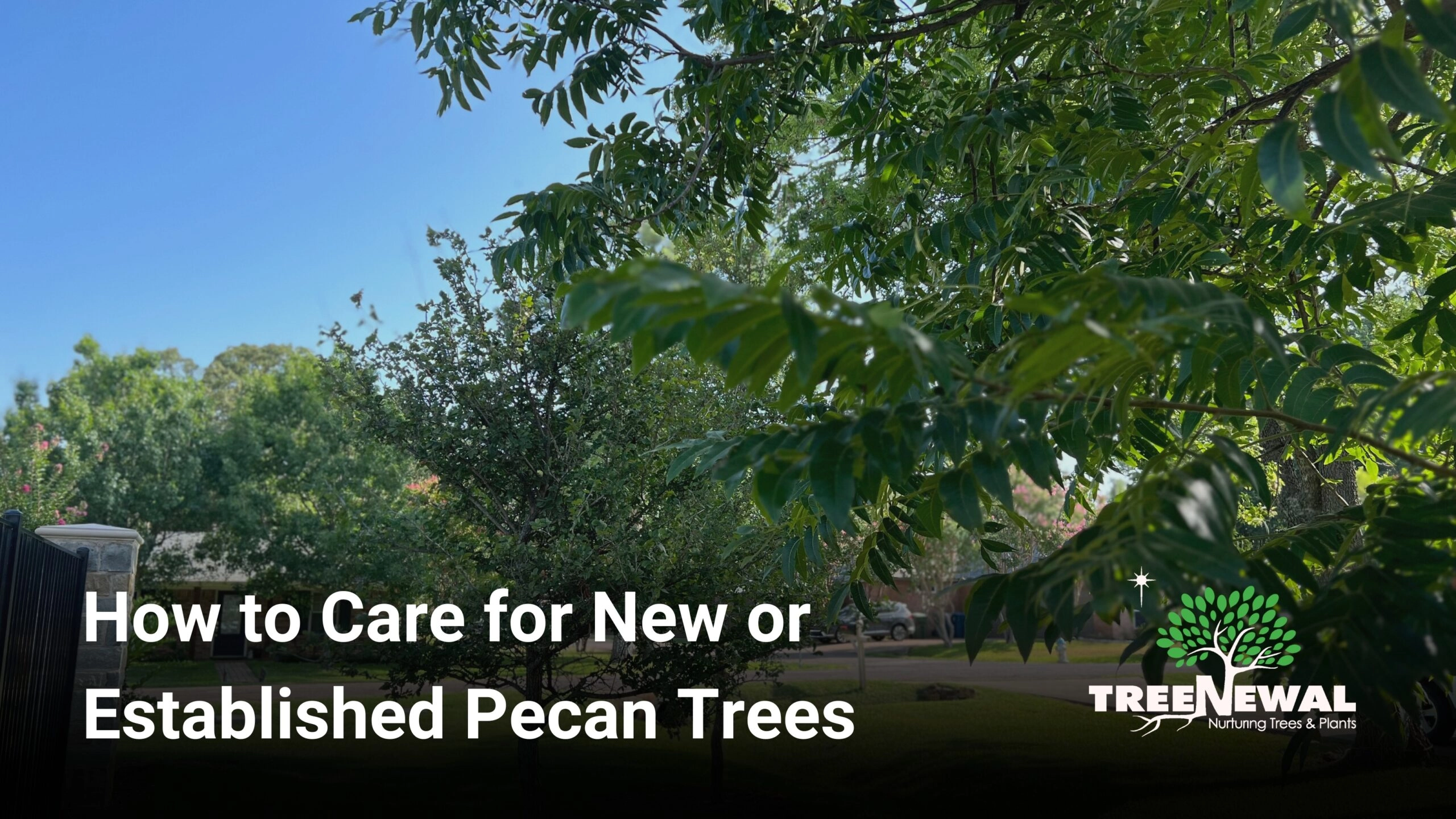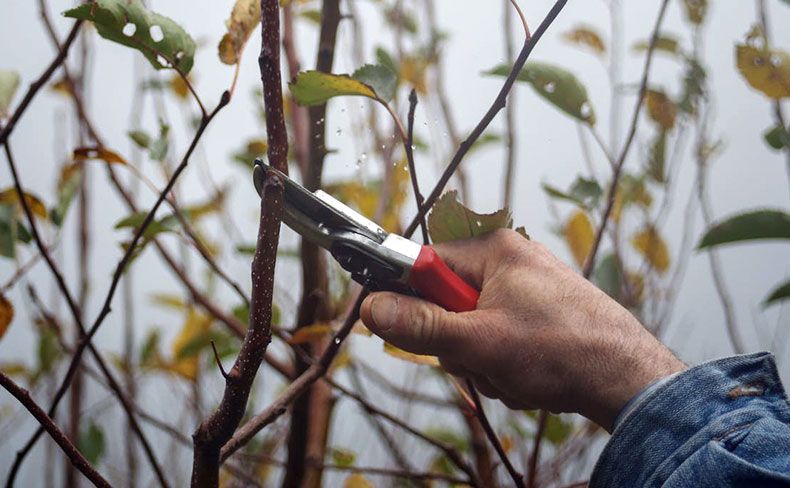Proper pruning is essential for maintaining the health and productivity of pecan trees. Pruning removes dead or diseased branches, improves air circulation, and encourages new growth, producing better nuts.
Pecan trees (Carya illinoinensis) are valued for their delicious nuts and as ornamental shade trees, but regular pruning is necessary to maintain their overall health and productivity. Pruning helps remove dead or diseased branches and stimulates new growth, improving air circulation and increasing nut production.
By following the correct pruning techniques and timing, pecan tree owners can prevent disease, manage tree size, and promote a strong and vigorous structure. This article provides an overview of pecan tree pruning, highlighting the importance of proper pruning practices and offering guidance on when and how to prune for optimal results. Whether you are a seasoned pecan tree grower or a beginner, understanding the basics of pruning can greatly contribute to the success and longevity of your pecan trees.

Credit: marketscale.com
Understanding Pecan Trees
Pruning pecan trees is essential for their health and productivity. You can encourage optimal growth and yield from these majestic trees by understanding the proper techniques, such as selective thinning and strategic timing.
Overview Of Pecan Trees
Pecan trees are beautiful additions to any landscape, providing both shade and the delicious pecans we all love. These majestic trees can grow up to 100 feet tall and have a spread of 75 feet, making them an impressive feature in any garden or orchard.
Pecan trees are known for their long lifespans, with some living well over 100 years. They require proper care and maintenance to reach their full potential. One crucial aspect of pecan tree care is regular pruning.
Benefits Of Pruning Pecan Trees
Pruning pecan trees offers numerous benefits, ensuring healthy and robust tree growth:
- Improved Air Circulation: Pruning opens up the tree canopy, allowing better air circulation and reducing the risk of diseases and pests.
- Enhanced Sunlight Exposure: More sunlight can reach the inner branches by removing excessive branches, promoting better photosynthesis and nutrient production.
- Increased Pecan Production: Proper pruning stimulates new shoots’ growth and encourages strong branches’ development, resulting in higher pecan yields.
- Shape and Aesthetics: Pruning helps maintain the pecan tree’s desired shape and overall aesthetics, creating an appealing appearance in your landscape.
Signs It’s Time To Prune Pecan Trees
To ensure the health and vitality of your pecan tree, it’s important to recognize the signs indicating it’s time for pruning:
- Overgrown Branches: If your pecan tree has overcrowded branches crossing or rubbing against each other, it’s time to prune.
- Diseased or Damaged Branches: Removing branches showing signs of disease, such as discolouration or oozing sap, prevents the disease from spreading to the rest of the tree.
- Weak or Dead Branches: Pruning weak or dead branches helps redirect the tree’s resources to healthy branches and aids overall growth.
- Excessive Suckers: Suckers, rapidly growing shoots emerging from the base of the tree, should be pruned to prevent them from draining essential nutrients.
Regularly inspecting your pecan tree and promptly pruning when necessary will ensure optimal health and productivity. Remember, pruning should be done during the dormant months, typically in late winter or early spring, before new growth begins.
Pruning Techniques For Pecan Trees
Discover effective pruning techniques to enhance the growth and productivity of your pecan trees. Learn how to trim and shape your trees to promote optimum health and yield.
Pecan trees require regular pruning to maintain their health and productivity. Proper pruning techniques help shape the tree, promote new growth, and improve overall fruit production. This section will discuss the different aspects of pruning pecan trees. Let’s start by understanding the importance of choosing the right time for pruning.
Choosing The Right Time For Pruning
Pruning pecan trees at the right time ensures optimal growth and fruit production. It is recommended to prune the trees during the dormant season, which is typically in late winter or early spring. Pruning during this period allows the tree to recover quickly and minimizes the risk of disease or pest infestation. It is best to avoid pruning during extremely cold weather or when the tree is actively growing.
Tools And Equipment Needed For Pruning
You will need a few essential tools and equipment to prune a pecan tree properly. These include:
– Pruning Shears: Choose a high-quality pair of pruning shears with sharp blades to make clean cuts without damaging the tree.
– Loppers: Long-handled loppers are useful for cutting thicker branches that pruning shears cannot handle.
– Pruning Saw: A pruning saw with a curved blade is ideal for removing larger branches or limbs.
– Gloves: Wear sturdy gloves to protect your hands from thorns, splinters, and other potential injuries.
Safety Glasses: Wear safety glasses to shield your eyes from debris that may fly during the pruning process.
– Disinfectant: It is essential to disinfect your tools before and after pruning to prevent the spread of diseases.
Step-by-step Guide To Pruning Pecan Trees
Pruning pecan trees can be done by following these simple steps:
1. Start by examining the tree: Before pruning, carefully evaluate the tree’s structure, identifying any dead, damaged, or diseased branches that need removal.
2. Remove dead or diseased branches: Cut off any dead or diseased branches at their base using pruning shears or a pruning saw. Make clean cuts close to the branch collar, the swollen area where the branch connects to the trunk.
3. Thin-out crowded branches: Remove branches crossing, rubbing against each other, or growing too closely together. This helps improve air circulation and allows more light to reach the inner parts of the tree.
4. Trim excessive growth: To promote a balanced tree structure, cut back any long or excessive growth, especially from the upper canopy. Prune the branches back to just above a bud or lateral branch.
5. Maintain the central leader: Pecan trees naturally have a central leader branch. Ensure that this central leader is maintained by cutting back competing branches that may try to take over as the new leader.
6. Shape the tree: Prune the branches to achieve the desired shape and height, considering the tree’s natural form and growth habits.
7. Step back and evaluate: After pruning, evaluate the tree’s overall shape and structure. Make any additional cuts as needed to achieve the desired outcome.
Remember, proper pruning techniques play a crucial role in pecan trees’ overall health and productivity. By choosing the right time for pruning, using the necessary tools, and following a step-by-step approach, you can effectively maintain and shape your pecan tree for years to come.
Maintaining The Pruned Pecan Trees
Maintaining pruned pecan trees is crucial for healthy growth and abundant nut production. Proper pruning techniques ensure optimal sunlight penetration, prevent disease and promote appropriate tree structure. With regular pruning, pecan trees can thrive and provide a bountiful harvest. Avoiding overused phrases, starting this description with a verb-led sentence, and keeping it concise will engage and inform readers searching for information on pecan tree pruning.
Maintaining the Pruned Pecan Trees
Proper Aftercare and Maintenance
Proper aftercare and maintenance are crucial for the health and productivity of pruned pecan trees. Once the pruning process is complete, providing the trees with the care they need to recover and continue to thrive is important. Here are some essential steps to ensure proper aftercare and maintenance of pruned pecan trees:
1. Watering: Adequate watering is essential to help the trees recover from pruning. Water the trees deeply and regularly, especially during dry spells or hot weather. Ensure the soil around the trees is moist but not waterlogged to prevent root rot.
2. Fertilization: Provide the pruned pecan trees with the necessary nutrients by applying a balanced fertilizer. This will help the trees regain their strength and promote new growth. Be sure to follow the recommended dosage and timing guidelines for fertilization.
3. Mulching: Apply a layer of organic mulch around the base of the trees. This will help conserve moisture in the soil, control weeds, and provide a gradual release of nutrients. Keep the mulch a few inches away from the trunk to prevent rot.
4. Pest and Disease Control: Regularly monitor the pruned pecan trees for any signs of pest infestation or disease. Promptly address any issues using appropriate pest control methods or seeking professional assistance. Early detection and intervention are key to preventing further damage to the trees.
Frequent Pruning Mistakes to Avoid
Pruning pecan trees can be a delicate process, and avoiding common mistakes that could harm the trees is important. Here are some frequent pruning mistakes to avoid:
1. Over-Pruning: It is important not to over-prune the pecan trees, as this can weaken their structure and compromise their overall health. Remove dead, diseased, or crossing branches and avoid excessive thinning.
2. Improper Cuts: Use clean and sharp pruning tools when cutting. Improper cuts, such as leaving stubs or cutting too close to the trunk, can lead to disease or slow healing.
3. Pruning at the Wrong Time: Prune pecan trees during their dormant season, typically in late winter or early spring. Pruning outside this period can inhibit new growth and make the trees more susceptible to diseases and pests.
Monitoring and Assessing Tree Growth
Monitoring and assessing the growth of pruned pecan trees is essential to ensure their continued health and productivity. Here are some key points to consider:
1. Vigilance: Regularly inspect the trees for signs of stress, such as wilting leaves, discolouration, or abnormal growth. Promptly address any issues that may arise to prevent further damage.
2. Growth Patterns: Observe the growth patterns of the pruned pecan trees to ensure they are developing healthily and balanced. Encouraging strong and upright growth while discouraging excessive branching or uneven canopy development is important.
3. Fruit Production: Monitor the fruit production of the pruned pecan trees. Assess the nuts’ quantity and quality to gauge the pruning techniques’ success. Proper pruning should promote improved fruiting and larger yields.
By following these proper aftercare and maintenance practices, avoiding common pruning mistakes, and regularly monitoring and assessing tree growth, you can ensure your pruned pecan trees’ long-term health and productivity. Take the time to provide the necessary care and attention to your trees; they will reward you with abundant and delicious pecans for years to come.

Credit: www.pinterest.com

Credit: www.starkbros.com
Frequently Asked Questions On Pecan Tree Pruning
How Often Should I Prune My Pecan Tree?
Prune your pecan tree annually during its dormant season, typically in late winter or early spring. This helps stimulate new growth and maintain its shape and health.
When Is The Best Time To Prune A Pecan Tree?
The best time to prune a pecan tree is during its dormant season, typically in late winter or early spring. This ensures that the tree is not actively growing and minimizes the risk of stress or disease.
How Much Should I Prune Off My Pecan Tree?
When pruning a pecan tree, aim to remove no more than one-third of its branches. This allows the tree to maintain its structure and minimizes stress. Focus on removing dead or damaged branches and any crossing or crowded branches.
Can I Prune A Pecan Tree In The Summer?
Pruning a pecan tree during the summer months is not recommended. Pruning during this time can disrupt the tree’s growth and increase the risk of disease and pest infestations. For best results, stick to pruning during the tree’s dormant season.
Conclusion
Pruning your pecan trees is crucial for their overall health and productivity. Proper pruning techniques can ensure a strong branch structure, better air circulation, and increased sunlight exposure for improved nut production. Regular pruning also helps control pests and diseases, enhancing the longevity of your trees.
Remember to consult an arborist or follow expert guidelines to ensure you prune your pecan trees effectively. By investing time and effort in pruning, you’ll enjoy healthier and more fruitful trees for years. Happy pruning!

